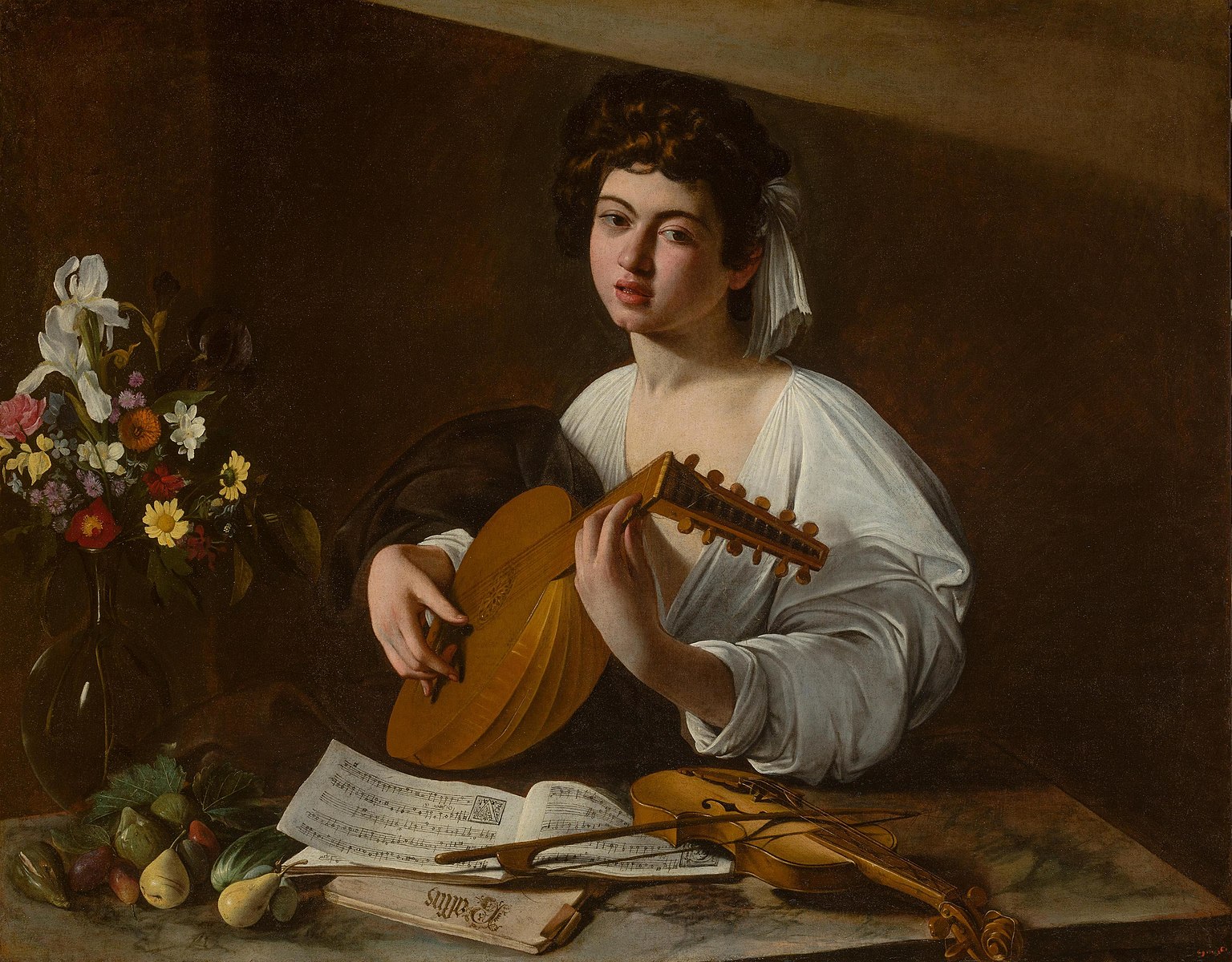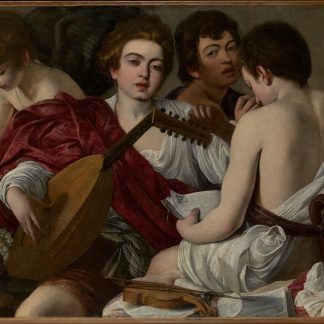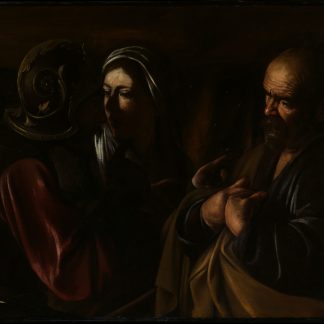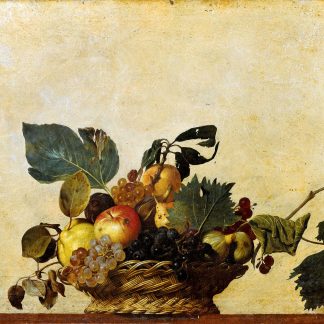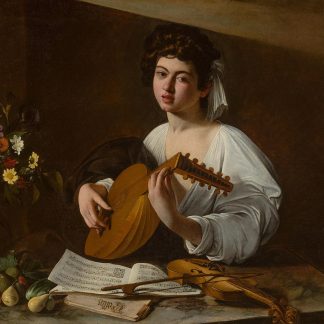Description
Caravaggio’s early biographer Giovanni Baglione gives the following description of a piece done by the artist for his patron Cardinal Francesco Del Monte:
E dipinse [per il Cardinale Del Monte]… anche un giovane, che sonava il Lauto, che vivo, e vero il tutto parea con una caraffa di fiori piena d’acqua, che dentro il reflesso d’ua fenestra eccelentemente si scorgeva con altri ripercotimenti di quella camera dentro l’acqua, e sopra quei fiori eravi una viva rugiada con ogni esquisita diligenza finta. E questo (disse) che fu il piu bel pezzo, che facesse mai. (“He also painted [for Cardinal Del Monte] a young man, playing the Lute, who seemed altogether alive and real with a carafe of flowers full of water, in which you could see perfectly the reflection of a window and other reflections of that room inside the water, and on those flowers there was a lively dew depicted with every exquisite care. And this (he said) was the best piece that he ever painted.)”
The painting exists in three versions. All show a boy with soft facial features and thick brown hair, accompanying himself on the lute as he sings a madrigal about love. As in the Uffizi Bacchus, the artist places a table-top in front of the figure. In the Hermitage and Badminton House versions it is bare marble, with a violin on one side and a still life of flowers and fruit on the other. In the Wildenstein version the table is covered with a carpet and extended forwards to hold a tenor recorder, while the still life is replaced by a spinetta (a small keyboard instrument) and a caged songbird. The musical instruments are valuable and probably came from Del Monte’s personal collection.
Bibliography
The Lute Player (Caravaggio), https://en.wikipedia.org/w/index.php?title=The_Lute_Player_(Caravaggio)&oldid=1101538193 (last visited Aug. 9, 2022).


